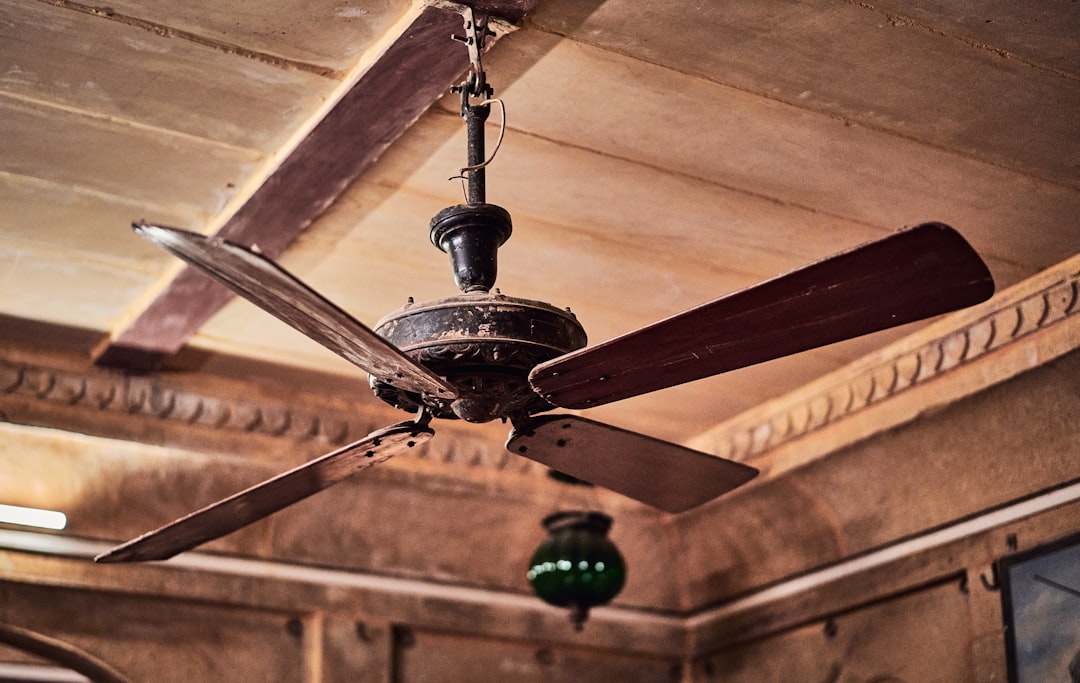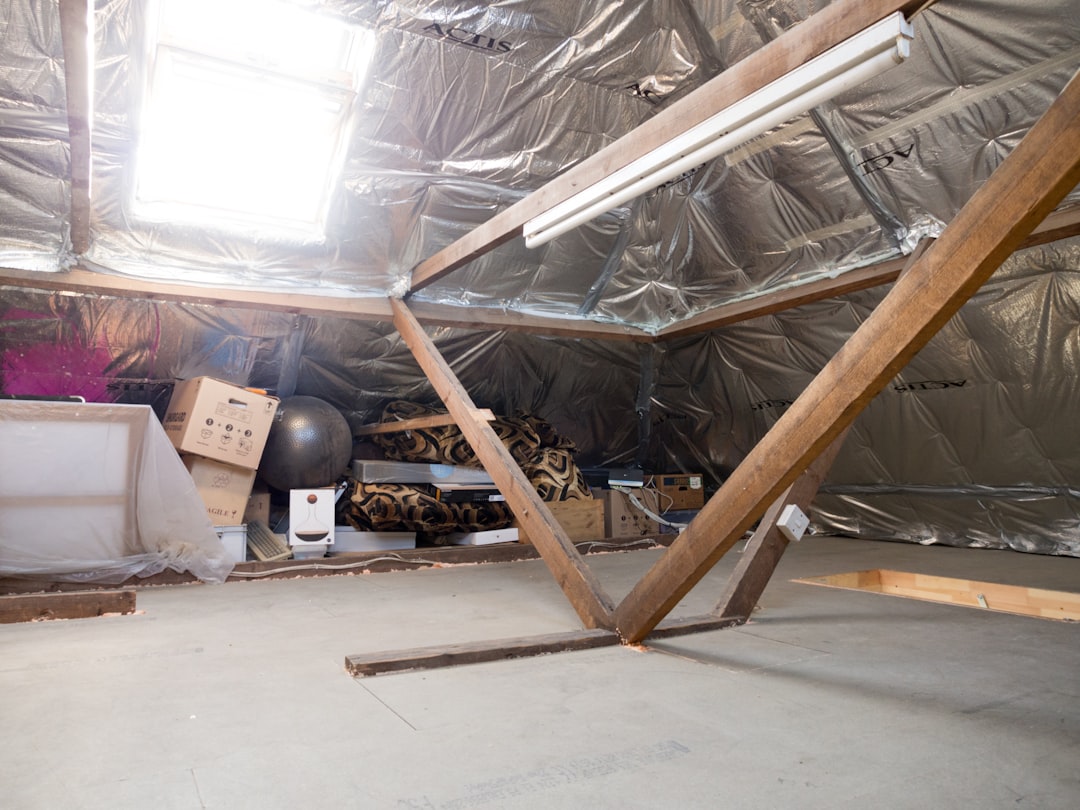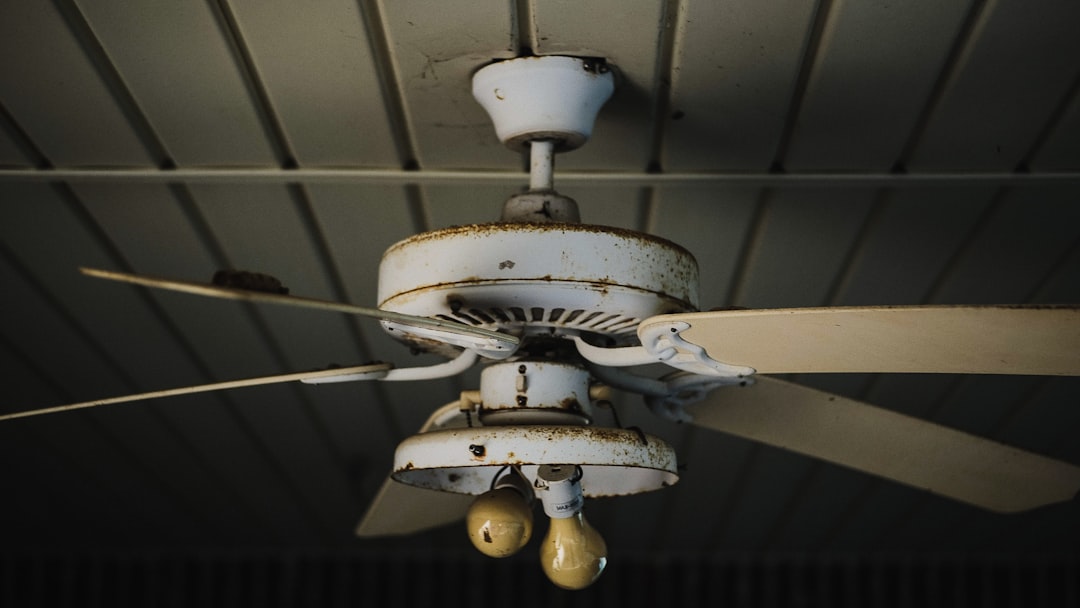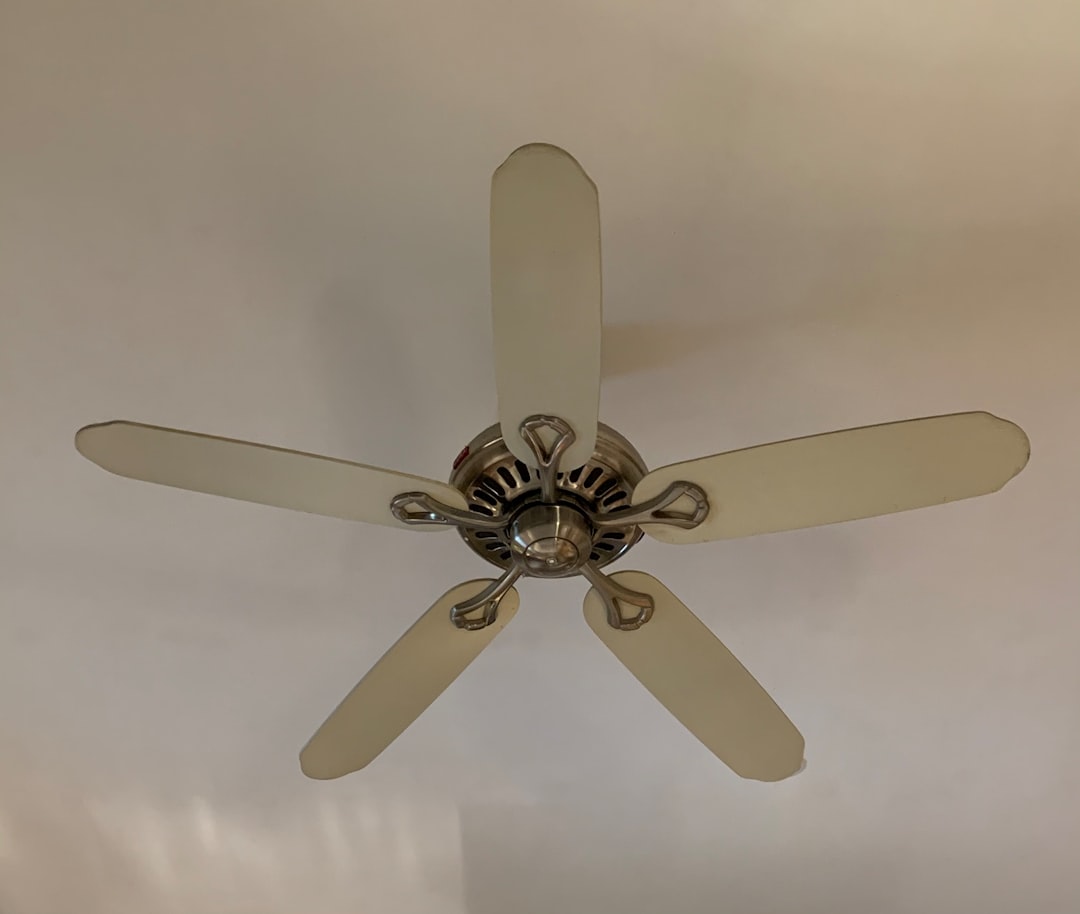

Engage prospects with a scan and streamline customer engagement with FREE QR code marketing tools by Sona – no strings attached!
Create a Free QR CodeFree consultation

No commitment

Engage prospects with a scan and streamline customer engagement with FREE QR code marketing tools by Sona – no strings attached!
Create a Free QR CodeFree consultation

No commitment
Data privacy concerns have evolved rapidly over the last decade, shifting the landscape for marketers who rely on robust targeting strategies. With legislation, heightened consumer awareness, and new technical limitations, brands must find a careful balance between respecting user privacy and delivering effective advertising. Given this climate, understanding the nuances of digital audience building has never been more crucial.
It’s no longer enough to use broad demographic groups as a proxy for audience intent. Modern marketers are honing their approach with more granular targeting, leveraging first-party data, and embracing privacy-compliant identifiers. This shift has required adaptation in everything from campaign measurement to the composition of custom audiences.
The process of building digital audiences today is complex, requiring ongoing investment in data cleanliness and compliance. Brands must carefully vet their data partners and prioritize transparency both internally and with consumers. Most importantly, marketers need to communicate the value exchange for user data clearly, putting privacy front and center in their messaging. Those that do will be best positioned to thrive in the next era of digital advertising.
QR codes have transformed attic fan repair services from routine maintenance tasks into streamlined, data-driven opportunities for growth. By enabling instant access to repair manuals, diagnostic videos, and scheduling tools, QR codes enhance technician efficiency and elevate the customer experience. Imagine technicians arriving fully prepared for each job, while customers enjoy faster service and transparent updates—all tracked and optimized through real-time data.
With Sona QR, you can create dynamic, trackable QR codes that update instantly without reprinting, connecting every scan to actionable insights and improved service outcomes. This means better resource allocation, quicker repairs, and stronger customer loyalty for your attic fan repair business. Start for free with Sona QR today and transform every scan into a smarter, faster, and more profitable service interaction.
You can find a reliable attic fan repair service near you by searching local listings, reading customer reviews, and verifying the service provider's experience and credentials in attic fan repairs.
Common issues with attic fans that require repair include motor failure, worn-out bearings, damaged blades, electrical problems, and accumulation of debris affecting performance.
The cost to repair an attic fan varies depending on the nature of the problem, but typical repairs can range from moderate fees for minor fixes to higher costs for motor replacement or extensive electrical work.
Signs your attic fan needs maintenance or repair include unusual noises, reduced airflow, the fan not turning on, or visible damage to the fan components.
You can maintain your attic fan by regularly cleaning the fan and its components, lubricating moving parts, inspecting for damage, and scheduling periodic professional inspections.

In today’s digitally driven world, QR codes have evolved from a novelty to a strategic powerhouse for bridging offline engagement with online action. For attic fan repair service providers, QR codes represent a practical and frictionless way to streamline service requests, support technicians in the field, and simplify customer communications without requiring an app or adding extra steps for homeowners or facility managers.
Many attic fan repair companies still depend on printed instructions, paper service requests, and phone hotlines for booking and troubleshooting. These analog processes introduce friction, increase error rates, and make it difficult to measure engagement or ensure follow-through. When customers engage with printed materials but never submit a form, teams lose visibility and miss high-value prospects. By placing QR codes on physical assets and collateral, you connect those moments to digital destinations like booking forms and installation guides, all accessible with a single scan and trackable in real time.
When deployed thoughtfully, QR codes accelerate response times, give technicians targeted resources while onsite, and make it seamless for customers to request service or access maintenance materials. The approach modernizes the customer experience while unlocking measurable gains in operational efficiency, data capture for CRM systems, and lead generation. By unifying previously disconnected touchpoints, QR strategies reduce missed follow-ups and inconsistent engagement, helping attic fan repair businesses grow with confidence.

QR codes bridge the gap between field interactions and digital service journeys. They address frustrations like missing high-value prospects who never submit requests and the risk of lost information when job details move between paper and digital systems. These gaps cause overlooked upsell opportunities and slow, error-prone service delivery. By embedding QR codes into everyday materials and workflows, you enable instant access to resources and capture engagement data at the source.
The key is to design your QR program with purpose. Start by identifying the analog steps that create friction, then replace those steps with scannable paths that take users directly to the right digital destination. Finally, track and improve performance over time with data that your team can act on.
Advanced QR management platforms like Sona QR give you control over dynamic content, automated QR generation, user-level engagement tracking, and CRM integration. This improves service efficiency and consolidates data across channels so technicians can prioritize high-intent prospects and reduce lost or duplicative engagement. Over time, your team can evolve from one-off QR experiments to a consistent and scalable program.

Attic fan repair services are undergoing a practical digital transformation that starts at the point of service. Teams still rely heavily on analog assets like appointment cards, paper service flyers, warranty stickers, and product manuals that rarely feed data back into CRM systems. This makes it hard to know which marketing efforts produce results, which touchpoints drive requests, and who your most engaged prospects are.
QR codes solve the offline to online disconnect. They turn every printed or physical asset into a data-rich entry point that guides customers to the next best step. Whether someone scans a sticker on a fan housing or a code on a direct mailer, your team gains instant visibility into intent, channel performance, and conversion journeys.
For attic fan repair, these advantages turn anonymous touchpoints into actionable engagements. Your team can respond to service needs faster and with precision while measuring the impact of every physical asset.

QR codes come in several formats, and each supports different actions and outcomes. Attic fan repair companies benefit most from formats that create instant service paths, capture intent, and make it easy to follow up. The right mix ensures both customers and technicians get the help they need, right when they need it.
Static QR codes work for content that rarely changes, like a PDF manual. Dynamic QR codes are better for anything that may need updates or tracking, such as booking forms or seasonal offers. Dynamic codes help you optimize over time without reprinting materials.
For most attic fan repair scenarios, web links and SMS or email formats deliver the most value because they are trackable and flexible. Pair these with dynamic QR codes managed in Sona QR to update links as your processes evolve and to capture consistent engagement data across all assets.
Growth often stalls when teams cannot see where conversions break down or which assets are underperforming. QR codes solve this by making every physical touchpoint measurable and actionable. When you place codes strategically, you illuminate the customer journey from first scan to scheduled service and beyond.
Start by mapping your most common offline interactions. Then add QR codes that point to the right action for that stage. Make sure destinations match the user’s intent, whether that is booking, learning, or requesting help. Over time, you can expand to additional placements and refine the creative and calls to action.
With comprehensive QR deployment, every touchpoint becomes a growth lever. You will gain a clearer view of intent signals, capture contact information earlier, and connect offline moments back into your CRM and marketing funnel.

QR codes deliver value across the entire repair lifecycle, from discovery and diagnosis to scheduling and feedback. By matching each use case to a common customer interaction, you can prioritize what to launch first, then scale the program with confidence as results roll in.
Start with scenarios that eliminate friction for both homeowners and technicians. Pair each code with a clear call to action and a destination that is tailored to the device and context. Use dynamic codes so you can refine messages and offers without reprinting.
Embedding QR codes across these use cases eliminates paperwork bottlenecks, accelerates the customer journey, and creates a data-driven view of every engagement. As performance data accumulates, you can refine placements, calls to action, and content to lift conversion further.
Each scan is a signal. It indicates what someone wants, where they engaged, and how ready they are to take action. By deploying multiple QR codes across your touchpoints, you can segment audiences automatically and use that data to fuel targeted retargeting and personalized follow-ups that move people toward booking.
Start by deciding which journey stages matter most for your business. Then assign distinct QR codes to each stage, with destinations and tracking that reflect specific intents. Finally, sync everything with your CRM and ad platforms so engagement triggers timely, relevant outreach.
With Sona QR, each code becomes an intelligent entry point into your funnel. You collect the behavioral and contextual data needed to personalize campaigns and improve conversion rates without guesswork.
QR codes are connectors that unify your offline and digital campaigns. They make every channel measurable, enable real-time engagement, and create a consistent flow of data across assets that were previously hard to track. When you integrate QR codes across your marketing mix, you can finally see how each touchpoint contributes to pipeline and revenue.
In attic fan repair, the most common channels include print collateral, service paperwork, direct mail, local advertising, and events like home shows. Embed QR codes with clear calls to action and benefit-led messaging, then use your QR platform to monitor performance and optimize placements.
QR codes serve as the offline onramp to your digital engine. With a centralized platform like Sona QR, you can manage all your codes, monitor performance in one dashboard, and sync scan data with your CRM and ad platforms to close the attribution loop.
A successful QR initiative starts with a clear use case and ends with measurable impact. The following steps help attic fan repair teams plan, launch, and scale QR programs that support technicians, streamline bookings, and capture clean data for growth.
Begin with a single high-value scenario, such as job site stickers that link to troubleshooting and booking. Prove value, then expand to other placements like invoices, uniforms, and vehicles. Use dynamic codes wherever possible so you can refine content and attribution without reprinting.
Select the scenario that will remove the most friction right away. For many teams, that is instant booking via job site stickers or providing technicians with a scannable resource hub. Define what success looks like, such as more completed bookings, faster repair times, or higher first-visit fix rates.
Match the code type to the job. Static codes work for rarely changing content like a PDF manual, while dynamic codes are best for content you may update or want to track in detail.
Make the QR easy to notice and understand. The design should be branded, the call to action concise, and the code tested in real conditions.
Roll out QR codes in the places where your audience already interacts with your brand. Focus on assets with a history of missed engagement, then expand based on performance data.
Treat your QR program like a performance campaign. Measure everything, learn quickly, and make data-informed updates.

Proving impact is essential. Counting scans is a start, but meaningful analytics connect QR engagement to bookings, NPS improvements, upsells, and revenue. When you capture context like location and referral asset, you can see which physical placements and messages matter most.
Modern QR analytics platforms make this simple. With tools like Sona QR and Sona, you can centralize all codes, standardize tracking, and attribute outcomes to specific scans. Over time, this reveals the path from first scan to closed service and justifies investment in the assets that drive results.
When every scan becomes an actionable data point, you can improve conversion, forecast pipeline more accurately, and invest with confidence in the placements that deliver the highest return.
QR programs succeed when they are consistent, measurable, and supported by the team. Focus on unique codes per asset, strong calls to action, and automated follow-up flows that keep the journey moving after the first scan. The more you integrate with your CRM and operations tools, the more value you will unlock.
Consider creative placements that meet customers where they are. For example, a QR code on an invoice can offer one-tap repeat maintenance sign-ups, while a code on installation instructions can open a video that prevents a second truck roll. Such touches improve satisfaction while saving time and cost.
With Sona QR, you can generate and track your first codes in minutes. As you scale, integrate with HubSpot or Salesforce to trigger workflows and alerts based on scan behavior.
QR codes are more than a shortcut; they are a strategy that helps attic fan repair service providers turn every physical surface into a digital entry point and every moment of interest into a moment of action. By making it easy to book, learn, and request support, you reduce friction for both homeowners and technicians while gathering the data you need to improve.
The benefits compound as your program matures. You will streamline workflows, capture previously anonymous demand, and unify touchpoints that once felt disconnected. The result is an operation that is faster, more transparent, and more accountable to real outcomes.
In summary, integrating QR codes into attic fan repair operations resolves pain points such as missed high-value prospects, fragmented information, and unmeasured touchpoints. By creating a seamless bridge between field activity and digital data, QR strategies enhance technician support, grow qualified audiences, and enable end-to-end attribution from first engagement to closed revenue. With Sona QR, you can capture demand at the source and convert it into measurable results, setting your business up for sustainable growth. Start creating QR codes for free.
QR codes have transformed attic fan repair services from traditional, time-consuming processes into efficient, data-driven operations. Whether it’s streamlining technician support, enhancing customer communication, or enabling instant access to repair instructions, QR codes replace guesswork with real-time, mobile-friendly solutions that boost both service quality and operational speed. Imagine technicians instantly pulling up detailed repair guides or warranty info on-site with a simple scan—saving time and elevating customer satisfaction.
With Sona QR, you can create dynamic, trackable QR codes in seconds, update repair resources without reprinting, and link every scan to measurable outcomes like faster job completion and repeat business. No more delays or lost information—just smarter, more effective attic fan repair services that keep customers coming back. Start for free with Sona QR today and turn every scan into a seamless repair experience and a loyal customer.
Use QR codes on physical assets like fan units, service vans, and printed materials to quickly access booking forms and installation guides that connect you to reliable attic fan repair services.
Common attic fan issues include mechanical failures, wiring problems, and maintenance needs that can be diagnosed faster using QR codes linking to troubleshooting guides and repair resources.
The article does not specify the cost to repair an attic fan.
Signs include reduced performance, unusual noises, or frequent breakdowns, and QR codes on fan housings can provide instant access to maintenance schedules and troubleshooting information.
Maintain your attic fan by following QR code-linked maintenance checklists, accessing how-to videos, and scheduling regular service through scanning codes on invoices or fan labels.

Attic fan repair services face a unique blend of digital and operational challenges. Homeowners demand quick response times, accessible information, and reliable service, all while contractors juggle appointments, parts inventory, and service records. Unfortunately, the transition to digital engagement often leaves prospective high-value customers untracked and unengaged, resulting in missed opportunities for new business and upselling valuable add-ons during routine maintenance.
Modern attic fan service providers need every touchpoint: from appointment booking and maintenance reminders to post-repair surveys, to convert initial interest into action, foster loyalty, and showcase home energy expertise. Yet, manual marketing and incomplete lead capture remain common, with many valuable prospects slipping through the cracks when interactions are not systematically logged or tracked. QR codes provide an accessible, app-free bridge. They connect offline interactions to tailored digital journeys, allowing contractors to identify previously unknown site visitors, capture rich engagement data, and nurture these relationships well beyond the initial repair.
By strategically deploying QR codes across key moments such as on service vans, appointment cards, installation guides, units, and invoices, contractors simplify customer journeys and gain account-level visibility on prospect engagement. Every scan creates measurable insight, helping separate anonymous interest from actual buying intent. This guide explores how attic fan repair businesses can turn QR technology into a tool for maximizing leads, streamlining service workflows, and building a more resilient growth engine.

Many attic fan repair firms still rely on analog processes such as paper appointment cards, printed maintenance checklists, or generic flyers, which leave valuable engagement signals invisible and qualified leads unpursued. This fragmented approach often means high-intent prospects never make it into the CRM, creating persistent blind spots that cost revenue and reduce customer lifetime value.
Replacing those analog touchpoints with QR-driven journeys creates a clean digital trace of each interaction. A scan on a van wrap can send a homeowner to a booking page; a scan on an invoice can initiate a review; a scan on a unit sticker can open a maintenance request. When each scan is tied to a campaign and a call to action, teams finally see which placements, offers, or messages are moving the needle.
By integrating QR codes, businesses can:
Modern QR management platforms such as Sona QR make it simple to generate dynamic codes, route scans to the right destinations, and analyze performance. With CRM and ad platform integrations, each scan can update a contact record, trigger a workflow, or build a retargeting audience. The result is a systematic, measurable funnel from first impression to loyal customer.

One of the biggest pain points in attic fan repair is the invisibility of many interested homeowners. People see a yard sign, notice a wrapped van, or browse a direct mail offer, but the next step is not obvious or feels cumbersome. Without a frictionless bridge from offline to online, high-value leads remain anonymous and quickly drop out of the funnel.
QR codes address this gap by turning curiosity into action. A homeowner can scan a code on a door hanger and book a diagnostic visit in under a minute. A neighbor walking by a jobsite can scan a yard sign to read verified reviews and see current promotions. A post-repair magnet on the fridge can include a QR prompt for seasonal tune-ups, closing the loop between service and retention.
QR codes solve critical challenges:
For attic fan providers, these benefits translate into real outcomes: fewer missed opportunities, faster booking cycles, stronger review pipelines, and better visibility into which neighborhoods or messages deliver the highest-quality jobs.
Choosing the right QR format is essential for matching homeowner intent to the next best action. In attic fan repair, most scans aim to book service, request help, read instructions, or leave feedback. Each goal maps to a specific format and destination.
Static QR codes point to unchanging content, such as a PDF installation guide. Dynamic QR codes can be edited after printing, which is useful for promotions, A/B testing, or campaign reassignments. Dynamic is generally the better choice for marketing and service workflows since it preserves flexibility and enables robust analytics.
High-value formats include:
In most attic fan scenarios, dynamic web link and SMS formats deliver the most value. They support tracking, allow changes without reprinting, and can send context to your CRM so you can segment and respond effectively.
Growth often hinges on placing the right prompt at the right moment. Attic fan repair businesses interact with homeowners through vehicles, yard signs, estimates, invoices, and installed equipment. Each of these touchpoints can be upgraded with a QR code that channels intent into action and insight.
Focus on placements where dwell time, relevance, and scanning convenience are high. Lighting and angles matter in attics; code size and contrast matter on vans and yard signs. Keep CTA language clear and benefit-oriented, and always provide a direct next step.
High-propensity placements include:
When each placement carries a unique code mapped to a specific objective, you gain attribution clarity and can invest more in what works while retiring underperforming assets.
Operational blind spots and incomplete follow-up are frequent sources of wasted potential in attic fan repair. QR codes transform passive materials into active, trackable assets that collect intent data and guide the next step.
Start with a small set of use cases tied to revenue and retention, then expand. Make sure destinations are mobile-friendly, fast, and aligned with the promise on the label next to the code.
Each of these use cases produces measurable data points that inform marketing and operations. Over time, you learn which codes lead to appointments, which placements generate reviews, and which offers convert upgrades.
Every scan is a micro-conversion that reveals context and intent data. With unique codes aligned to journey stages and service needs, attic fan providers can identify serious buyers, nurture casual researchers, and re-engage past customers at the right cadence.
Segmentation begins at the code level. Use separate codes for awareness placements like door hangers and vans, consideration placements like installation guides and spec sheets, and conversion placements like estimates and coupons. Then sync these signals to your CRM and ad platforms so follow-up happens automatically.
Practical ways to build audiences:
With tools such as Sona QR, scans turn into structured data that power retargeting, lead scoring, and personalization. You stop guessing who is interested and start nurturing based on real behavior.
Disconnected efforts drain budgets and obscure learning. QR codes unify channels by tying print, field service, and digital marketing into one measurable system. The same code that appears on a van door can appear in a social post or TV overlay to consolidate attribution and streamline next steps.
This integration improves both the customer experience and operational efficiency. Homeowners get fast, app-free access to what they need. Your team gets reliable data on which assets and messages create value so you can optimize spend and shift resources toward the highest ROI.
Examples of integration that fit attic fan services:
Using a centralized platform like Sona QR, you can manage code inventory, rotate destinations, and unify analytics across all these channels. This turns scattered materials into a coordinated engine for awareness, conversion, and retention.
Many QR code initiatives fall short because setup is piecemeal or tracking is inconsistent. The fix is a methodical plan that treats each scan as both a learning opportunity and a lead source. Define objectives, choose formats wisely, and connect the dots from scan to revenue.
Start with one to three high-impact use cases such as scan-to-book repair, post-service reviews, and maintenance reminders. Validate performance over four to six weeks, then scale up with more placements and offers based on what works.
Clarify the business problem you want to solve. For example, reduce phone tag by 30 percent with scan-to-book repair, or increase Google review volume by 25 percent using QR-enabled invoices and thank-you cards. Set a measurable target so success is unambiguous.
Map each use case to its primary destination. Booking flows require a short form and a calendar; reviews require direct links to your preferred platforms; maintenance reminders need a simple request form and a way to capture model or install date.
Choose dynamic codes for nearly every marketing or service application. Dynamic codes let you update destinations, add UTM parameters, and collect analytics without reprinting materials. Use static codes only for evergreen assets like a PDF that will not change for years.
Match the format to the action. Use web links for booking and content, vCards for contact sharing, and SMS or email for pre-filled messages that reduce friction and capture intent data. For best practices on UTMs and scan tracking, see QR codes in marketing.
Design for visibility, clarity, and trust. Add your logo, brand colors, and a benefit-driven CTA such as “Scan to book a diagnostic in 60 seconds” or “Scan for your seasonal tune-up discount.” Include a short, readable fallback URL for those who cannot scan.
Test in real conditions. Scan on iOS and Android, from different angles and distances, and in common environments like dimly lit attics or bright outdoor settings near vans and yard signs. Increase size and contrast where needed, and avoid glossy finishes that create glare.
Roll out codes in places where homeowners naturally encounter your brand. Prioritize vans, yard signs, invoices, unit stickers, and direct mail. Place codes at eye level where possible and near headlines or offers that motivate action.
Stage the deployment so you can isolate performance. Launch a few placements first, monitor results for two to three weeks, then expand. Use unique codes for each placement and message so you can compare scan rates and conversion outcomes. Test variations across vans and yard signs to improve visibility and response.
Instrument everything with analytics. Attach UTM parameters to destinations, tag each code by placement and campaign, and sync scan events to your CRM. Review dashboards weekly to spot trends, test new CTAs, and adjust destinations for better conversion.
Let insights shape your next iteration. Retire underperforming placements, double down on codes that produce booked jobs or reviews, and experiment with seasonal offers. With platforms like Sona QR, you can automate follow-up emails or SMS based on scan type so no high-intent action slips through the cracks.
Even well-executed QR campaigns can disappoint if you cannot connect scans to booked jobs and revenue. The goal is not just engagement counts; it is understanding which codes and placements lead to appointments, reviews, upsells, and repeat business.
Comprehensive tracking transforms QR codes from a novelty into a performance channel. Instrument codes with UTM parameters, unify reporting across placements, and integrate with your CRM for contact-level visibility. Over time, you get a clear picture of which investments deliver pipeline and which do not.
By using QR-integrated analytics, businesses can:
Sona QR captures granular scan data by time, device, and location, while Sona brings identity resolution and multi-touch attribution to connect scans with website visits, ad clicks, emails, and CRM activity. Together, they bridge the full journey from first scan to revenue so you can optimize in real time.
Sustained results come from smart execution and steady iteration. The most common pitfalls include using a single code everywhere, burying CTAs, printing codes too small, or failing to train technicians to prompt scanning at the right moment.
Refine your approach with a few high-impact practices. Treat every placement as a test, close the loop with automation, and guide homeowners with clear benefits and next steps.
Best practices include:
Creative deployment examples for this vertical include a QR-enabled attic access placard that lives near the ladder and a QR on filter replacement reminders tucked into service folders. Both prompt timely action when homeowners are thinking about airflow and energy efficiency.
Attic fan providers are already proving how QR codes turn overlooked moments into measurable results. The most successful initiatives blend smart placement, clear CTAs, and automated follow-up that converts interest into appointments and reviews.
Use these ideas as a starting point, then tailor them to your market, message, and brand voice. Track each example with its own code so you can quantify performance and scale the winners.
Each example shows the power of meeting homeowners where they are, at the exact moment they are most receptive, and guiding them to the next action with a single scan.
Execution pitfalls often relate to design, placement, and process. Small or low-contrast codes, confusing CTAs, or glare from glossy surfaces can kill scan rates. Missing CRM integrations leave sales teams blind to intent that should be actionable.
Avoid these issues with careful planning and technician training. Test designs in real lighting, use dynamic codes to preserve flexibility, and align every destination with a clear outcome.
The payoff is a reliable, repeatable system where every scan is a signal you can track, measure, and act on.
QR codes have become an essential driver for business transformation in attic fan repair services. They turn every appointment, installation, and printed asset into dynamic opportunities for engagement, insight, and conversion. By blending physical service delivery with actionable digital touchpoints and surfacing signals that have traditionally remained invisible, repair providers streamline workflows, reduce friction for homeowners, and amplify their marketing impact while ensuring high-value opportunities are not missed.
With agile QR deployments across customer touchpoints, attic fan repair companies achieve:
As the home services landscape becomes more competitive and digitally integrated, leveraging QR codes is no longer a novelty; it is a strategic advantage. Providers who close the gap between anonymous engagement and known, qualified prospects position themselves to capture more of the market, deliver sustained value, and set a new standard for operational effectiveness and customer experience in attic fan repair. If you are ready to start, generate your first dynamic code, place it on a high-traffic asset like your invoices or vans, and connect it to a clear next step such as booking or reviews. Start creating QR codes for free.
QR codes have transformed attic fan repair services from traditional, time-consuming processes into seamless, efficient customer interactions. By integrating QR codes, technicians can easily access repair manuals, service histories, and troubleshooting guides on the spot—enhancing accuracy and speeding up repairs. Imagine instantly connecting customers to maintenance tips or booking follow-up appointments through a simple scan, turning every service call into an opportunity for stronger relationships and repeat business.
With Sona QR, you can create dynamic, trackable QR codes tailored for attic fan repair workflows, update content anytime without reprinting, and gather valuable data to refine your service approach. This means no missed leads, better technician support, and measurable improvements in customer satisfaction and retention. Start for free with Sona QR today and revolutionize how your attic fan repair services engage customers—making every scan a step toward faster fixes and loyal clients.
Look for providers who use modern tools like QR codes to offer quick booking, easy access to information, and trackable customer engagement for reliable and efficient service.
Common issues include mechanical failures, motor problems, and maintenance needs that affect performance and energy efficiency, often identified through diagnostic visits or maintenance reminders.
The article does not specify exact repair costs but suggests that repair providers can offer estimates and promotions through digital booking forms accessible via QR codes.
Signs include reduced airflow, unusual noises, or decreased energy efficiency, which can be addressed by scheduling timely maintenance or repairs through scan-to-book QR codes.
Regular maintenance can be scheduled using QR codes placed on the unit or service documents, which link to maintenance request pages and reminders for seasonal tune-ups.
Use Sona QR's trackable codes to improve customer acquisition and engagement today.
Create Your FREE Trackable QR Code in SecondsJoin results-focused teams combining Sona Platform automation with advanced Google Ads strategies to scale lead generation

Connect your existing CRM

Free Account Enrichment

No setup fees
No commitment required

Free consultation

Get a custom Google Ads roadmap for your business






Launch campaigns that generate qualified leads in 30 days or less.
